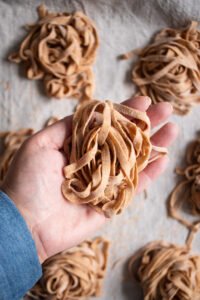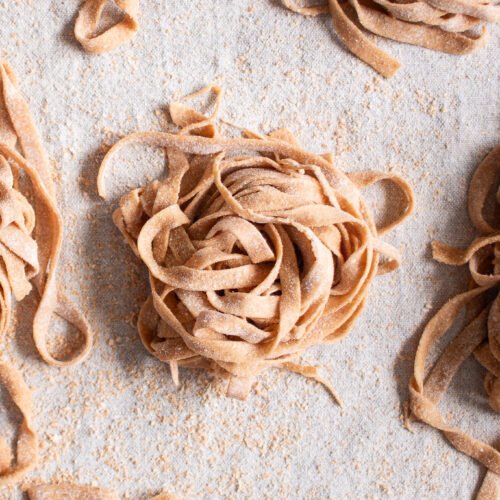
Freshly milled Spelt Pasta
A pasta made with freshly ground spelt berries. It may take a while to get that feel of a good pasta dough, a pasta machine only makes rolling out easier, but it can't tell you when your dough is ready, only your hands can. So don't bother buying those expensive pasta machines, in short they don't do the work! They just hurry it and that we do not like :-)
Print
Pin
Servings: 500 g Fresh Pasta
Equipment
- 1 Manual Pasta Machine (or a rolling pin)
Ingredients
- 300 g Spelt berries
- 3 L Pastured Eggs
Instructions
- Mill the spelt as finely as possible, on my mill that would be on 1 for spelt.
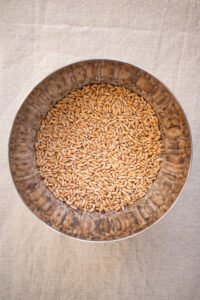
- If you do not have a stainless steel or marble countertop, it can be less messy to use a bowl. Even though I prefer using the volcano method myself, I simply don't like the mess it makes on my wooden countertop, so unless you have a proper countertop or a pasta table, you can simply make the volcano in a big mixing simply by making a well in the flour like this.

- Crack your eggs into the well.

- Whisk the eggs with a fork.

- It doesn't have to be more than this, the yolks simply need to be broken down.

- Then I use one hand to mix the flour into the egg mixture.
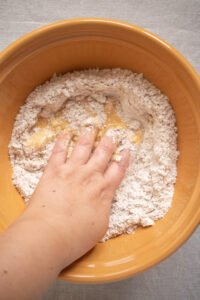
- It takes a little time to create a dough ball so be patient and keep working the dough, simply add Love and time into it.

- This is how my dough looks before I start kneading it. It is very rustic.
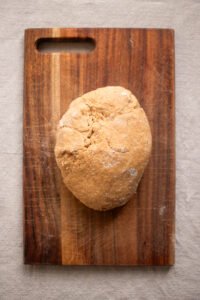
- A pasta dough needs to be pulled and folded to become smooth. This kneading process can be a bit physically demanding and it might take 10-20 minutes to get a super smooth pasta dough. Start by stretching the dough as far as you can without breaking it.
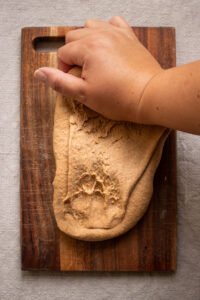
- Then fold the dough over itself and repeat until the dough starts to feel smooth and even. I usually set an egg timer for 10 minutes and if I'm not at a point where I feel the dough is nice and smooth and not sticky, I knead it another 5-10 minutes.
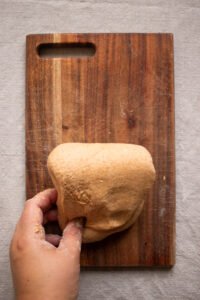
- When the dough can be formed into a smooth ball without getting dough on your fingers and it is super smooth and slightly shiny on the surface, it is ready. At this point I would usually wrap it in a piece of waxed linen or plastic wrap. Then I let the dough rest for at least 30 minutes and preferably for an hour in the refrigerator.
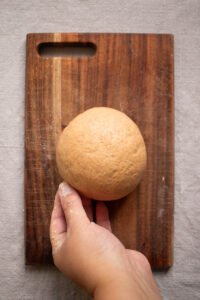
- When the dough has rested, I usually cut it into 4 parts and press the first part down with the palm of my hand and roll it until it is approx. half an inch. Then it is ready for the pasta machine. If you don't have a pasta machine, you continue working with your rolling pin exactly as if you had a pasta machine. It's the same as a rolling pin, you roll, fold and roll again. Each time you just roll out thinner and thinner.
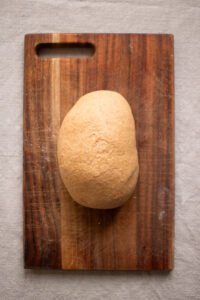
- There are several thickness settings on a pasta machine, there are about 6 settings on my old Imperia. So just start with the widest setting at first.

- Then you take and insert the dough 3 to 4 times on the first three settings. Just run the dough through and fold it 3 times and run it through the same setting again, and repeat this until the dough comes out very smooth. When you have reached the middle setting, you can run the dough on the second finest setting and when the dough looks nice and smooth, cut the edges of the dough and sprinkle it with flour and run it through the last setting if you are making lasagna sheets.
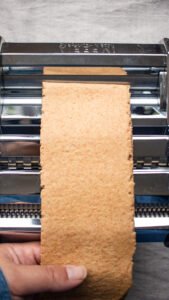
- If you want to make fettucine or linguine, the sheets don't have to be as thin as for lasagna. So, just roll the floured sheets through the fettucine/linguine pasta setting on the machine. This is also where you fold your dough in 3 and cut it with a knife if you make traditional Mamma pasta without a machine. (Remember to sprinkle with plenty of flour, otherwise you'll risk the pasta sticking together and yes, that means you have to start all over again).
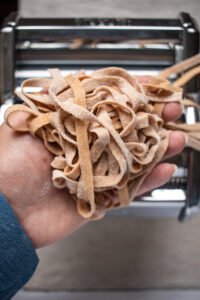
- Since I decided to make fettucine here. I decided to shape the noodles into bird's nests and stretched them on a piece of linen and dried them for an hour until I cooked them in plenty of boiling water.
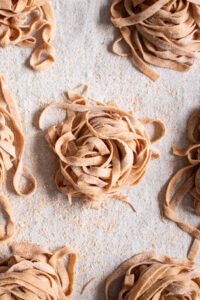
- This method makes it easier to transfer the noodles to the boiling water and the pasta is less likely to stick together during cooking. I cooked this pasta aldente, it took about 5-6 minutes in boiling water. Spelt takes longer to become aldente than wheat pasta, so add a few minutes extra cooking time.
